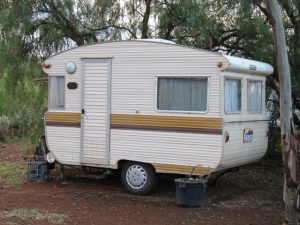
Whenever I think about going through our thousands of family and travel photos, be they in digital form, colour prints or scanned to the computer, I develop what migraine sufferers assure me is not a migraine, just a headache.
The problem begins with the lack of a system. Few people other than professional photographers or serious hobbyists catalogue their photos and negatives in a logical way. So good luck looking for that photo of your little brother skateboarding when he was 10. It’s in there somewhere.
Recently, a family member took on a big project – to collect photos across seven decades to put in a book for my brother-in-law’s 70th birthday. This social media-savvy young person wisely, I thought, decided to capture the images permanently in a printed book.
The early contributions of course were box brownie snaps from somebody’s shoebox, scanned and photo shopped where appropriate. Some were from colour slides, also scanned and photo shopped, usually to obtain a larger image. Then we delved into photo albums from the 1970s, 1980s and 1990s, until the digital folders began.
Maybe we were late adaptors to digital cameras, but we seem to have left film and negatives behind only in the early years of the 21st century. By that time, they’d been in common use for a decade, even though Steve Sassoon of Kodak invented the first digital camera in 1975. We came home after a six-month sojourn abroad in 2004 with 60 CDs of photos we burned from images downloaded on to a borrowed computer.
Since then, my non-system has accumulated piecemeal on laptops, back-up drives and memory sticks. She Who Also Takes Photos has a smarter system in that she can readily find images by subject.
No such luck on my computer. For example, a folder labelled ‘March, needs sorting’ on review contains just 15 (of 97) images worth keeping. In the late 1990s, we both clung to shooting film on SLRs and sending the film off to a cut-price mail order business. Digital cameras and later cameras in smart phones replaced this process, which was costly. You often had to wait a week or more until you could relive the memories from Aunt Gladys’s 90th. If only she hadn’t blinked.
I recall learning how to produce my own prints from negatives, albeit in black and white. Few young people today would know the thrill of seeing a photo you took that day materialise in a tray of chemicals.
If you watched the Netflix series, The Crown, you’d have seen a dramatization of one of the best film photographers of the time in action. Tony Armstrong-Jones is depicted in the dark-room with his latest amour (Princess Margaret), trying on what appears to be a well-rehearsed seduction technique. He’d taken an intimate shot, with bare shoulders – against mores of the time (1959). Margaret, who comments, “It’s a Margaret nobody has seen,” resists his blandishments (but not for long, Ed).
Film and self-processing makes a comeback
As Alexandro Genova wrote in Time magazine last year, there is a small but determined resistance to digital photography among amateurs and professionals alike. Some are effusive about film and its “unexpected palette, the grain and dynamic range”.
Portraitist Ryan Pfluger says of Kodak’s decision to revive Ektachrome film, that the “creamy ’70s tone” channels his fascination with memory and nostalgia.
Genova’s article is framed by a stunning shot of a wildfire in Glacier National Park, Montana. The image is by professional photographer and artist David Benjamin Sherry, who processes and prints his own work.
“There’s a spirituality that’s connected to it. I go out to take the pictures and at the end of the day I’m by myself, alone with my thoughts, in the dark room. It becomes very meditative,” he told Genova.
No doubt the majority of hobbyists, oblivious to this meditative magic, will continue to snap what used to be called ‘candids’ on their smart phones. They can then post instantly to Facebook, Instagram, or other social media outlets.
The 2004 earthquake and tsunami in the Indian Ocean revolutionised the way media covers news. Digital Spy’s correspondent Hunter Skipworth says the stark images of the tragedy were filmed by ordinary people, using their phones to capture images and video. From then on, anytime a major news event happened, anywhere in the world, it would be filmed by a citizen on their smart phone. That was a fairly short advance from the first commercially available digital SLR in 1991 (Nikon’s 1.3 megapixel camera, intended for use by press photographers). By the mid-1990s Casio, Kodak, Sony and others joined the race to produce an affordable digital camera. Digital Spy reveals that Apple had a short-lived flirtation in this field in 1995 with the QuickTake 100. Apple went on to focus on the Iphone with built-in cameras. Good move, Steve.
Most smart phones have cameras which have at least 4 megapixels and often up to 12mp – good enough quality for a ‘citizen’ photo. The practise is so widespread now most newspapers carry a regular ‘reader’s photo’.
However galling that may be to professional photographers and videographers who spent a lifetime learning their trades, it comes down to who first captures the image.
Facebook, which had a modest debut in 2004, surfed in on an explosive wave of change. The introduction of the iPhone in 2007, universal access to broadband and perhaps the invention of the ‘selfie stick’, all helped Facebook become the behemoth it is today.
My friend Mr Shiraz is slowly collecting images of his now adult children (and their offspring), with the idea of permanently preserving them in photo albums. He’s not alone in this quest.
Like others with Gen Y and Gen X offspring, he can see the potential for a catastrophic fail arising from the ubiquitous habit of impulsively posting memorable photos, trusting the archiving to that most nebulous of beasts, The Cloud.
Here’s an example, from the days when hacking mischief was in its infancy, of what can go wrong. In 2001 our computer was infected by the I Love You virus, which among other nasty deeds corrupted all JPG files. It was not such a disaster for us as we were still mainly wedded to film.
As we plough through our old photos, a common problem arises. Here’s your father as a young lad, standing with…now who are those three other people? There’s nothing written on the back and the people who could tell you are long gone.
The same fate awaits the millions of images consigned to the ‘cloud’ –data servers located, well, somewhere. You can establish when the image was taken, but not by whom. Nor, unless someone has ‘tagged’ the images with people’s names, can you determine who is in the photo or where it was taken.
 What is even more annoying is not knowing who took the photograph: surely that matters? I’ll leave you with this rare snap of The Goodwills busking in Melbourne’s Bourke Street (a while ago).
What is even more annoying is not knowing who took the photograph: surely that matters? I’ll leave you with this rare snap of The Goodwills busking in Melbourne’s Bourke Street (a while ago).
No, I don’t know who took it. Perhaps it was a ‘selfie?’



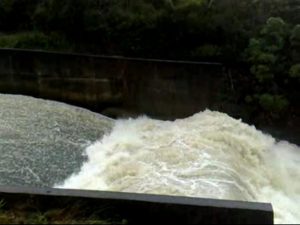





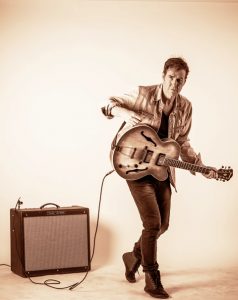

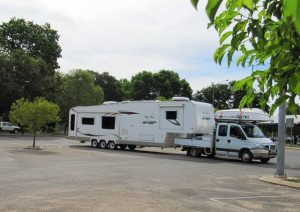
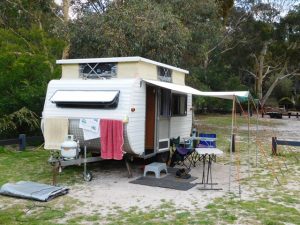 The second thing, given we were going to be staying a few nights, was to put up the awning (left) − an old-style canvas sheet which has to be threaded into a channel along the roof of the caravan, then pegged out with poles and ropes. Believe it or not, this was a first. Now, with a bit of wax for the sail track and a few extra tent pegs, we can achieve this every time we stay more than one night. #feelingsmug
The second thing, given we were going to be staying a few nights, was to put up the awning (left) − an old-style canvas sheet which has to be threaded into a channel along the roof of the caravan, then pegged out with poles and ropes. Believe it or not, this was a first. Now, with a bit of wax for the sail track and a few extra tent pegs, we can achieve this every time we stay more than one night. #feelingsmug
